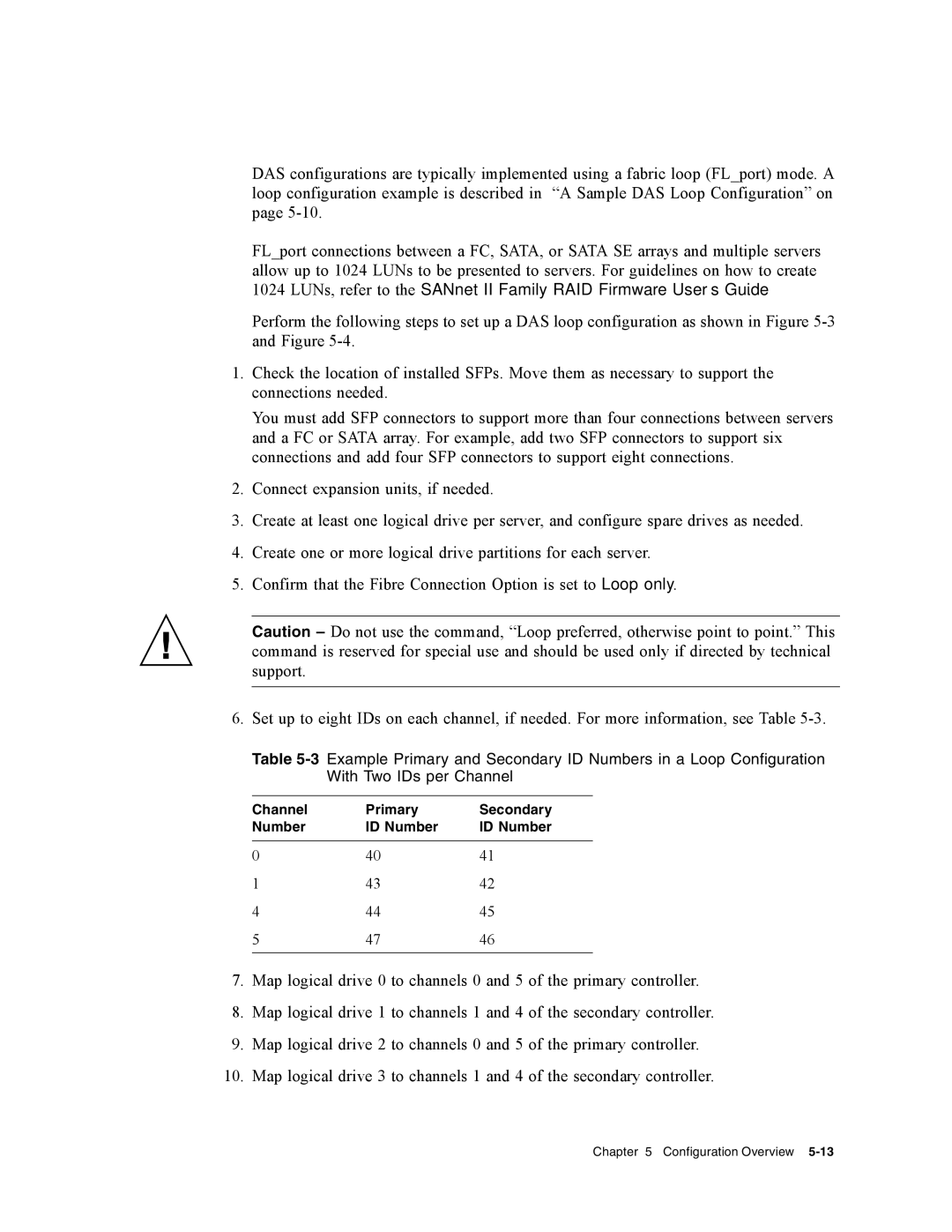
DAS configurations are typically implemented using a fabric loop (FL_port) mode. A loop configuration example is described in “A Sample DAS Loop Configuration” on page
FL_port connections between a FC, SATA, or SATA SE arrays and multiple servers allow up to 1024 LUNs to be presented to servers. For guidelines on how to create 1024 LUNs, refer to the SANnet II Family RAID Firmware User’s Guide.
Perform the following steps to set up a DAS loop configuration as shown in Figure
1.Check the location of installed SFPs. Move them as necessary to support the connections needed.
You must add SFP connectors to support more than four connections between servers and a FC or SATA array. For example, add two SFP connectors to support six connections and add four SFP connectors to support eight connections.
2.Connect expansion units, if needed.
3.Create at least one logical drive per server, and configure spare drives as needed.
4.Create one or more logical drive partitions for each server.
5.Confirm that the Fibre Connection Option is set to Loop only.
Caution – Do not use the command, “Loop preferred, otherwise point to point.” This command is reserved for special use and should be used only if directed by technical support.
6.Set up to eight IDs on each channel, if needed. For more information, see Table
Table
Channel | Primary | Secondary |
Number | ID Number | ID Number |
|
|
|
0 | 40 | 41 |
1 | 43 | 42 |
4 | 44 | 45 |
5 | 47 | 46 |
|
|
|
7.Map logical drive 0 to channels 0 and 5 of the primary controller.
8.Map logical drive 1 to channels 1 and 4 of the secondary controller.
9.Map logical drive 2 to channels 0 and 5 of the primary controller.
10.Map logical drive 3 to channels 1 and 4 of the secondary controller.
Chapter 5 Configuration Overview
